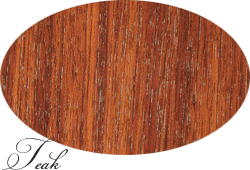Types of wood
There are literally hundreds of types of tree that are used to produce wood flooring, each with different colouring and grain patterns. No two trees are the same, so there is also natural variation in the boards of any batch, and this is part of what gives wood it’s unique charm. Furthermore, the finish applied to the surface will govern how light or dark the resulting floor is, and how the grain and natural imperfections are enhanced. The net result of all this is that you’re spoiled for choice!
To give you some idea of the range of woods that are available, here are some pictures. The samples have been lightly oiled to enhance the wood’s colour and grain. These examples show just a tiny fraction of what can be obtained, so if a wood you like isn’t shown, please contact me and I’ll let you know if I can source it.









Types of board
There are two types of board that I fit: solid and engineered. There are some important differences between them, though once the boards are down, you can’t tell the difference.
- Solid boards, as the name implies, are made from solid timber, so the entire thickness of each board is made from natural wood.
- Engineered boards are made from ply-wood topped with a veneer of natural wood.
The engineered boards have better “dimensional stability”. That means that they expand and contract less, and they are less susceptible to moisture than solid timber. If solid boards get damp for some reason, they will swell and distort, whereas engineered boards will tolerate a higher moisture content before they exhibit problems.
The price of equivalent solid and engineered boards works out about the same, and most of my customers choose engineered. I’m happy to fit either and the choice depends on each customer’s personal preference.
Although most customers choose a traditional side-by-side layout of the boards, some great effects can be achieved by laying the boards in a pattern. Sometimes, the pattern of the floor can be chosen to enhance some characteristics of the room. For example, this room is octagonal, it has a two-strip border around the outside to define the perimeter, a herringbone pattern throughout but with a circular centre section done in plain strips. I’d be delighted to explore the possibilities for your room and work with you to design a unique, bespoke floor.
